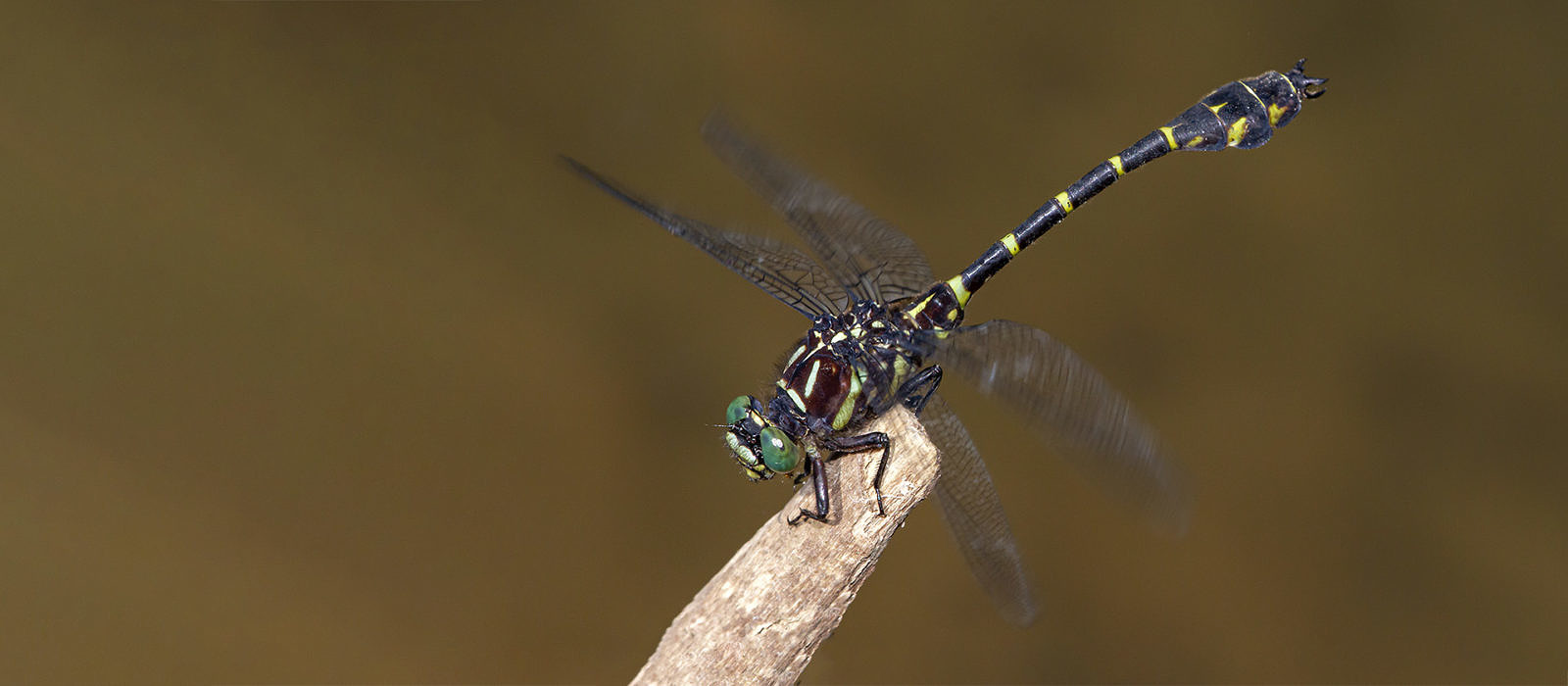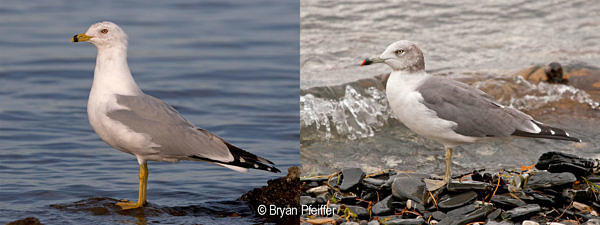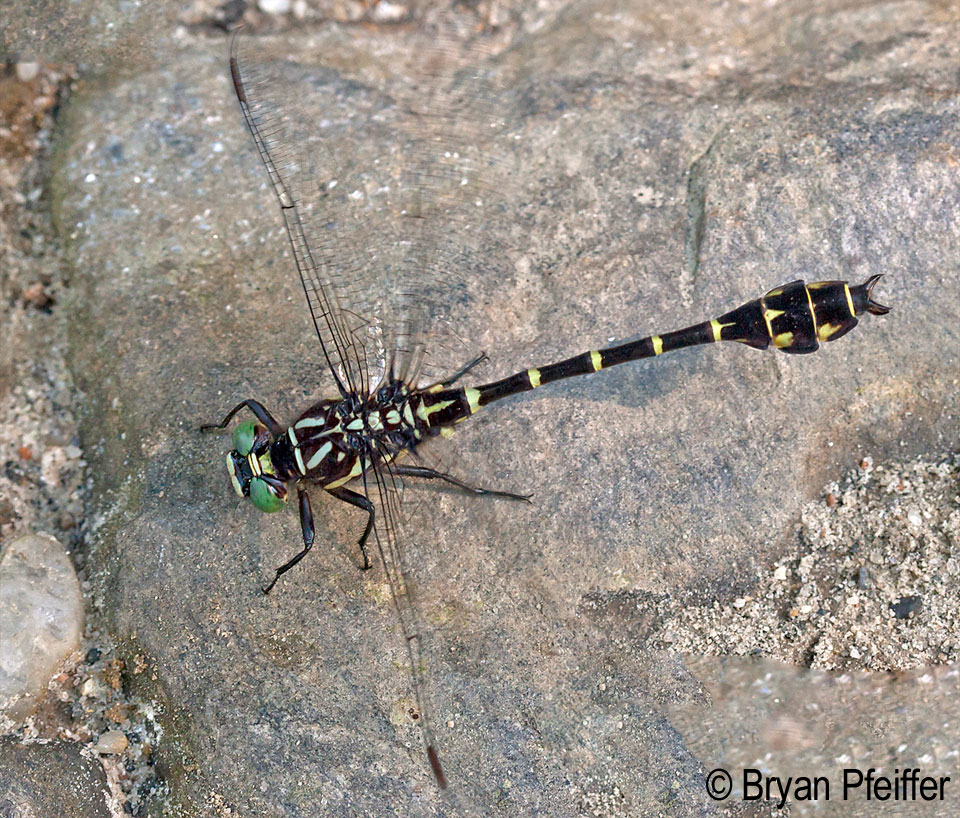
Zebras and Us
A Theory of Beauty Among Dragonflies
Before I lose it yet again over an insect, you must understand one thing about dragonflies: Not all dragonflies are created equal. Well, actually, they weren’t created at all. Not all dragonflies are descended equally from a common ancestor — at least in the eyes of characters like me who chase these insects to the far corners of the planet. As I see it, some dragonflies are more equal, more electrifying, more everything, than others.
My example is Zebra Clubtail (Stylurus scudderi). That’s him above from Lewis Creek in Starkboro, Vermont, last week. When I saw this dragonfly, I wet my pants. Okay, I was standing in Lewis Creek, so that’s actually how I wet my pants. But this dragonfly makes me euphoric. And I’m not entirely sure why. So I’m developing a theory on wildlife and aesthetics.
The theory begins with this hypothesis: rarity bestows beauty. Wildlife that we rarely get to see, the odd and elusive, looks to us inordinately beautiful when we actually see it in the field. We must know in advance of the critter’s scarcity for this condition to work.
The beauty that rarity bestows, however, isn’t always warranted. Take Black-tailed Gull. It lives in east Asia. It’s rare here in the U.S. Really rare. So when a Black-tailed Gull showed up in Charlotte, Vermont, in October of 2005, birders in droves came to see it. This gull should have been in the Sea of Japan rather than on the shores of Lake Champlain. It was a big event. And as the gull, acting like any other gull, sat there before the besotted crowd and a battery of expensive optics, I recall at least one of those birders gushing, “It’s so beautiful. It’s such a beautiful gull!”
Really? Any more beautiful than the common Ring-billed Gulls with which this Asian was consorting that day? Maybe the red tip on a Black-tailed Gull’s bill beats the ring on a Ring-billed Gull. Maybe. But I find our common Ring-bill more elegant. Rarity bestows beauty, even if it’s unwarranted.
Which brings me to Zebra Clubtail. Remember, not all dragonflies are equal. Some fly around your pond edge in abundance and sit there like Ring-billed Gulls. They’re the sparrows of dragonflies. I enjoy them nonetheless. I’ve spent many hours bringing these backyard dragonflies to life and light through photography, including the two images I’ve posted here of common beasts going by the names Twelve-spotted Skimmer (Libellula pulchella) and Widow Skimmer (Libellula luctuosa). They are fine dragonflies; I’m glad to have them among our fauna.
But they’ve got nothing on Zebra Clubtails.
Zebra Clubtails belong to a genus called Stylurus. The name might derive from “stylus” – or needle – because some of them have long, elegant abdomens (rather than the club-like abdomen displayed in our Zebra Clubtail). We’ve got only 11 Stylurus clubtails in the US (30 in the world). They fly – some like cruise missiles – on rivers. And many are exceedingly elusive. There could be hundreds of these clubtails on a stretch of river, but you’ll never see one. They spend the day hanging (needle pointed downward) high from leaves on trees along the riverbank, only dropping to the river now and then to rocket around and kill something or have sex in the air way out over the middle of the river where you can’t reach them with your net or see them with your binoculars.
Stylurus clubtails can be like a prize you’ll never win, a job you’ll never get, a fruit you shall never pick. One particular species, rarely seen as an adult (even when we see scores of its nymphs – the immature form) is aptly named Elusive Clubtail – so much so that it’s hard to learn much about the habits of this particular dragonfly. We purposefully alter its scientific name, Stylurus notatus, to be “Stylurus no datus.” I myself achieved some notoriety last summer when I found and photographed the first adult Elusive Clubtail, freshly emerged and still soft, ever encountered in the province of Saskatchewan.
On a hot day, walking these sand- and gravel-bottomed streams (as I did with my pals Josh and Wally last week), beneath a rich riparian zone, is like walking on clouds. I can think of no finer way to spend a day in August. But the best thing about this pursuit is that unlike most of their congeners (their relatives in the same genus) Zebra Clubtails sometimes perch on rocks, gravel bars, fallen logs and stout twigs beside the stream. And seeing a Stylurus clubtail in plain view is like gazing at the aurora borealis or at a solar eclipse, at a supermodel or a Hell’s Angel, for as long as you care to look. It is immeasurably satisfying, so much so that you feel you must avert your gaze, that you are unworthy of this beauty or rarity.
 Is it the rarity bestowing this beauty? Perhaps not. Casual observers of dragonflies might see in Zebra Clubtail nothing particularly distinctive. All summer I’ve offered blog readers a steady diet of dragonflies, including clubtails, notably in a post titled The Gomphids and another cool but gruesome dispatch called Gomphicide. To many of you, all these dragonflies look alike. And, in fact, many of them do. But zebras are nothing if not resplendent in pattern. And that, I believe, accounts for much of Zebra Clubtail’s appeal.
Is it the rarity bestowing this beauty? Perhaps not. Casual observers of dragonflies might see in Zebra Clubtail nothing particularly distinctive. All summer I’ve offered blog readers a steady diet of dragonflies, including clubtails, notably in a post titled The Gomphids and another cool but gruesome dispatch called Gomphicide. To many of you, all these dragonflies look alike. And, in fact, many of them do. But zebras are nothing if not resplendent in pattern. And that, I believe, accounts for much of Zebra Clubtail’s appeal.
Relative simplicity rules in this dragonfly: black, yellow and green. No complications. And the pattern on its abdomen – those yellow bands around the base of eight of the 10 abdominal segments – is rare among dragonflies. I believe those rings account in large part for this dragonfly’s distinctiveness, appeal and shocking beauty. It’s a pattern making this insect instantly recognizable to anyone who cares to learn and look. And knowledge, knowing a species by its name, is pleasure.
Consider this comparison: Zebra Clubtail and one of its more dazzling relatives, Serpent Ringtail (Erpetogomphus lampropeltis), which I photographed in Arizona. Yep, you can’t argue with the shock-and-awe of an aqua body and blue eyes. But there is complication in the markings of this insect: no simple bands on the abdomen, no uniformity of color. Beautiful complications, to be sure, but the symmetry and patterns on the Zebra resonate with the pleasure centers in my brain and my DNA. (Click on the image for a bigger view.)

Zebra Clubtail (Stylurus scudderi) and Serpent Ringtail (Erpetogomphus lampropeltis) / © Bryan Pfeiffer
Zebra Clubtail is a damned striking animal. Perhaps, yes, because this is no ordinary clubtail – it’s a Stylurus, after all, and by no means common or one of those backyard pond dragonflies everyone sees. Even so, ignore my theory if you want and its hypothesis that rarity bestows beauty. The hypothesis is easily falsifiable and tossed aside anyway. I suspect, however, that it does apply here – at least to some extent.
Yet I need no condition of scarcity to enjoy this insect. It is plainly spectacular.
What do you think?




Ahh, my spirit guides and one of the “big boppers” to boot! (That’s my nickname for the big ones.)
Hey- wondering if y’all could help ID a dragonfly that landed on my chest in the garden a couple days ago?.. it was iridescent green with big giant blue eyes- enormous body -thicker than I’ve seen- proportioned like an old biplane more than a long stem body. Along the deep green body were a few pretty wide zebra stripes of a sort of plum color… I believe yellow legs. It was feeding on another insect and sat just beyond my nose for quite awhile,masticating away. I didn’t dare go for the phone cam but wish I had- it was amazing! Any ideas? I can’t seem to find a pic
… and any lep, of course!
Yeah — I’ll factor in desire as I refine this. Thanks, Ann!
Still time this summer, Bob!
Thanks for the insights, Ginny. I’ll keep exploring the “theory.”
Vivid! Thanks, Judy. An honor to publish your poetry here!
Nice to hear from you, Rich. I’ll get to the NW sometime next year.
Thanks, Martha. I’ll have a postscript soon.
I’m just happy reading your writing about your sightings!
Always good to be the partaker of your enthusiasm!
Dragonfly
Aerial knight
patrolling lakeshore
zips back forth up down
bejeweled body
onyx silver emerald-green
flashes in sunlight
lands to rest on
my head.
Wings set my scalp vibrating
bristly legs pull at my hair
he tiptoes to my crown.
I sit regally tall still
wearing my insect tiara
feeling blessed that he
chose me.
Judy Brook
June 17, 2014
Bryan – your photos are amazing as always and your Zebra, as you said, is “plainly spectacular”!! I’m so happy you had the opportunity to see and photograph this beautiful creature and share it with the rest of us. Your hypothesis might be plausible for some, such as the Black-tailed Gull, but your Zebra would be spectacular no matter where or when you might come across the rare set of circumstances to see it.
Thanks, again, for an interesting presentation. I haven’t thought much about dragonflies for a long time, but I will now.
rarity may bestow desire but not beauty ….in my book.
I don’t know the names of the dragonflies but when I am sitting by the pond and a dragonfly lands on my head I am happy.
Oh, I agree… and yet I am happy spending time with any Ode.